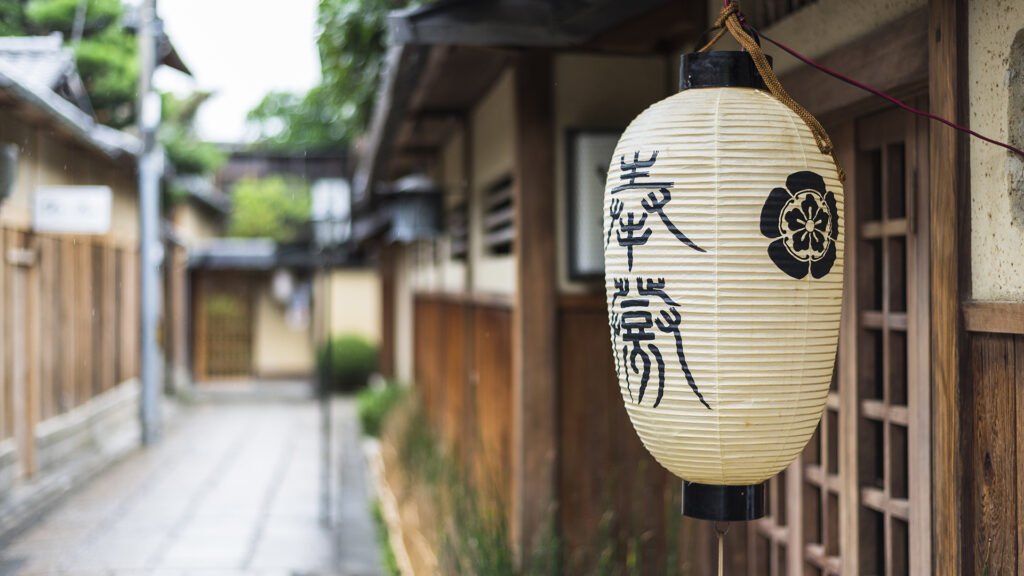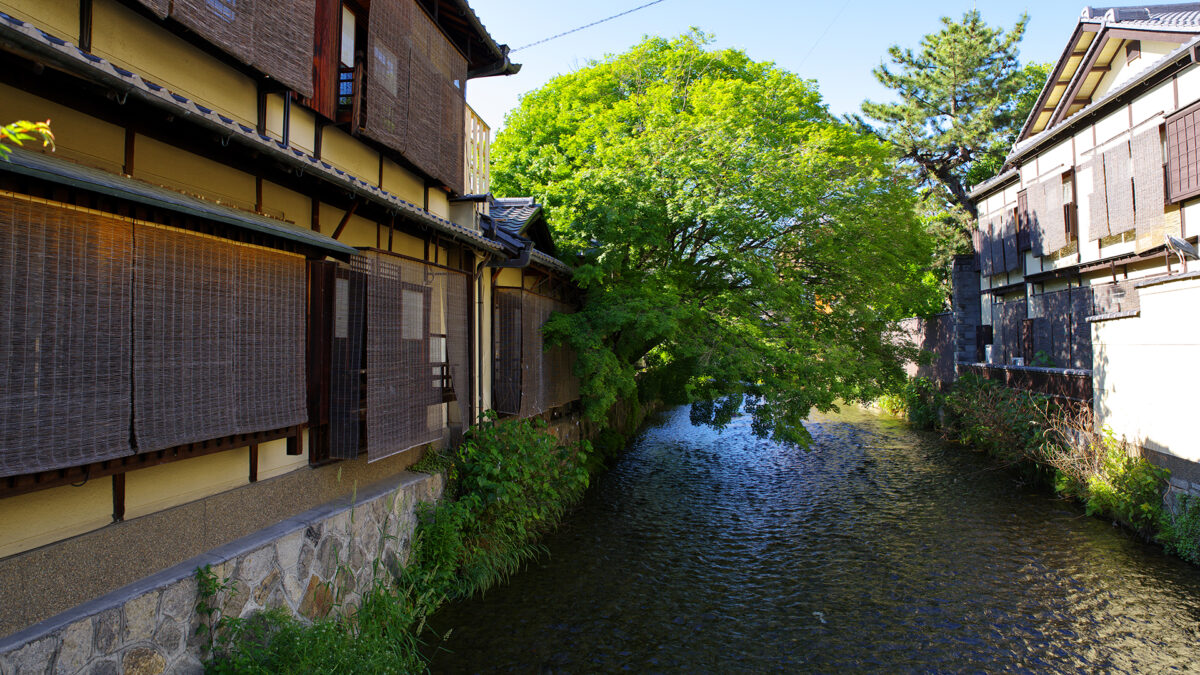- Prologue: The Breath of Kyoto, City of Winds
- Chapter One: Sanjō Station and the Kamogawa—A Morning When Time Slows
- Chapter Two: Walking Through Higashiyama—Stone Pavements, Lattice Doors, and the Workshop
- Chapter Three: Mokume-gane as Poetry, the Memory in a Craftsman’s Hands
- Chapter Four: The Evening Light at Tatsumi Bridge and the Glow of a Ring
- Final Chapter: What the Pattern Holds
Prologue: The Breath of Kyoto, City of Winds
The wind of Kyoto reaches somewhere deep in the memory.
In summer, it carries the coolness of shaded trees.
In autumn, it delivers the faint scent of fragrant olive from nowhere in particular.
In spring, it brushes against the budding willows, and in winter, it drifts with a crisp stillness in the piercing cold.
A town where such wind feels most at home—this is Higashiyama, this is Gion, and it is here, between Sanjō and Gion-Shijō, that you will find the workshop of mokume-gane.
Stepping out of Keihan Sanjō Station, the Kamogawa River flows gently before you. Imagining the era when Takase boats plied these waters, the traveler first walks along the riverside. The sound of the water, the calls of birds, the soft footsteps of passersby—all blending together like a single piece of music that wraps around the city.
Somehow nostalgic, and yet new.
The air of Kyoto holds this mysterious layering of time.
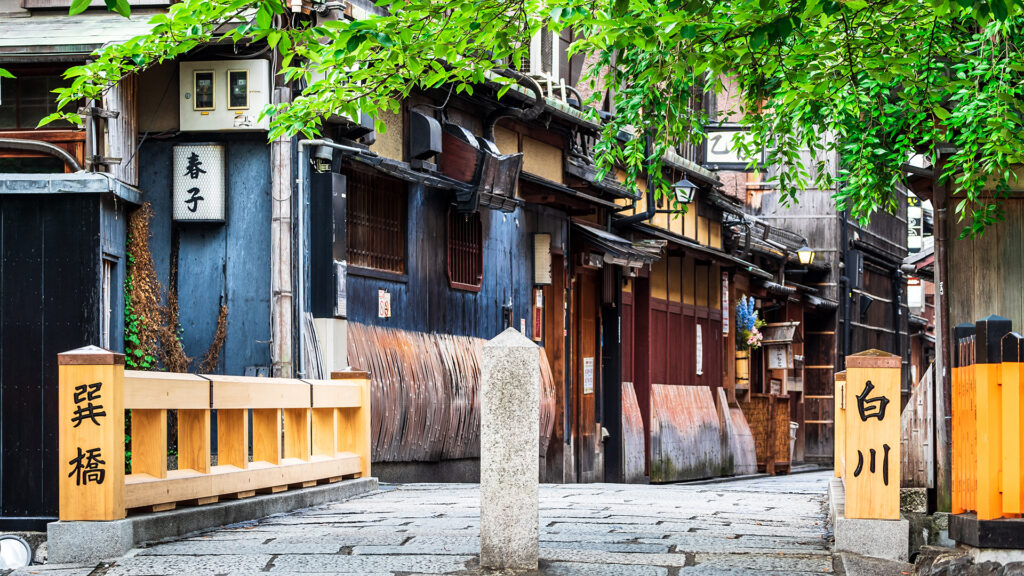
Chapter One: Sanjō Station and the Kamogawa—A Morning When Time Slows
Walking along the Kamogawa in the early morning, you’ll feel the willows swaying and the slightly chilly wind brushing your cheek. In the distance rise the Higashiyama mountains, with the town resting gently at their feet. From the bridge, you look down at the water’s surface—morning sunlight dissolves into ripples, and white clouds shimmer in the mirror of the river.
It is a scene like a painting, yet this is no “still life.”
Light and wind move; time seeps in. Standing here, your pace naturally slows. There’s no reason to hurry, no need to rush. Simply becoming part of the scenery is the most comfortable thing.
And within this air of Kyoto is a craftsman who has been creating for many years: mokume-gane artisan Kunio Takata. His workshop sits in a quiet corner of a machiya townhouse, a short walk east from the Kamogawa and near Gion-Shijō.
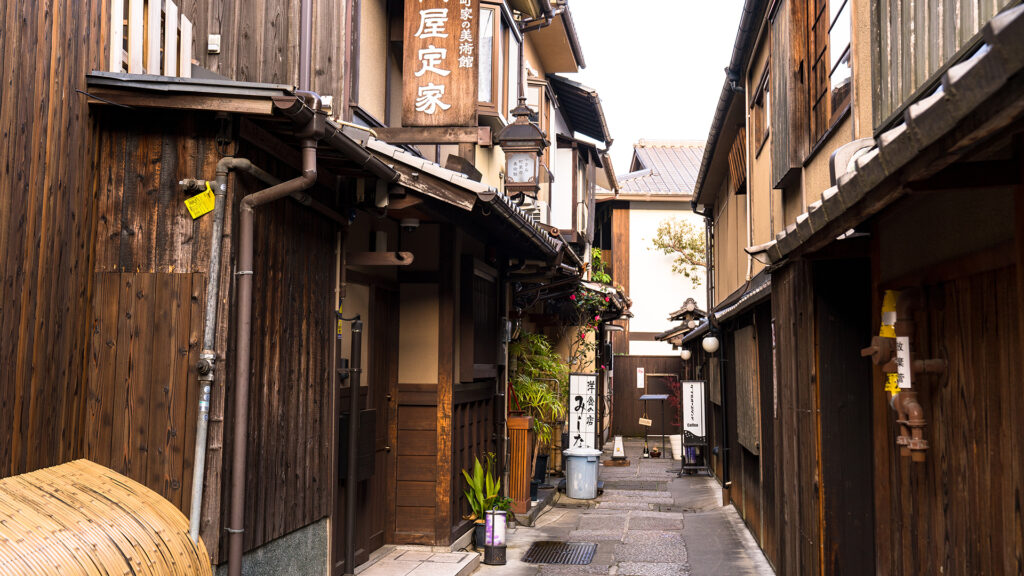
Chapter Two: Walking Through Higashiyama—Stone Pavements, Lattice Doors, and the Workshop
Leaving the Kamogawa and heading east into the alleys, you step into the streets of Gion. Narrow stone-paved paths line up with lattice-fronted houses and quiet white-walled buildings. Each home seems to turn its back to the passersby, modest in appearance, yet if you look closely, you’ll see a distinct sense of beauty.
Shadows of the lattice fall on the stones, wind stirs the bamboo fences, noren curtains sway gently.
Together, they weave the pattern called “Kyoto.” And among them stands Takata’s workshop.
At the eaves, a discreet wooden sign reads simply: “Mokume-gane Workshop enishi.” From the outside, it appears as an ordinary machiya, but inside lies a space where time feels densely compressed.
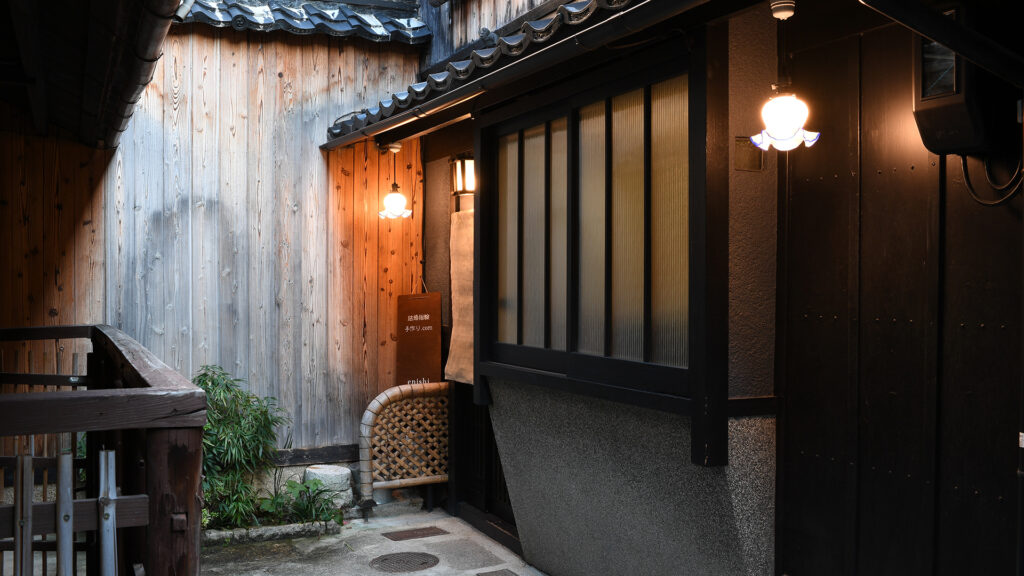
Chapter Three: Mokume-gane as Poetry, the Memory in a Craftsman’s Hands
The workshop is filled with stillness. On the workbench lie silver and copper plates. Hammer, carving knife, chisels—all well-worn from years of use, imbued with the scent of metal and the warmth of the artisan’s hands.
Kunio Takata patiently hammers the layers of metal. His mokume-gane is a uniquely Japanese technique—stacking layers of different metals, heating, hammering, stretching, and carving until natural wood-grain patterns emerge. Once used for sword fittings, this technique has been reborn in the modern form of rings.
“The pattern cannot be controlled. That’s what makes it fascinating. It is the harmony born of nature, time, and my own hands.”
As he speaks, his eyes gaze at the surface of the metal, yet somehow seem to be looking out toward the Higashiyama mountains.
The sound of the hammer in the workshop is almost like gagaku, Japan’s ancient court music—steady, yet containing a subtle fluctuation. Its rhythm feels like the wind of Higashiyama itself.
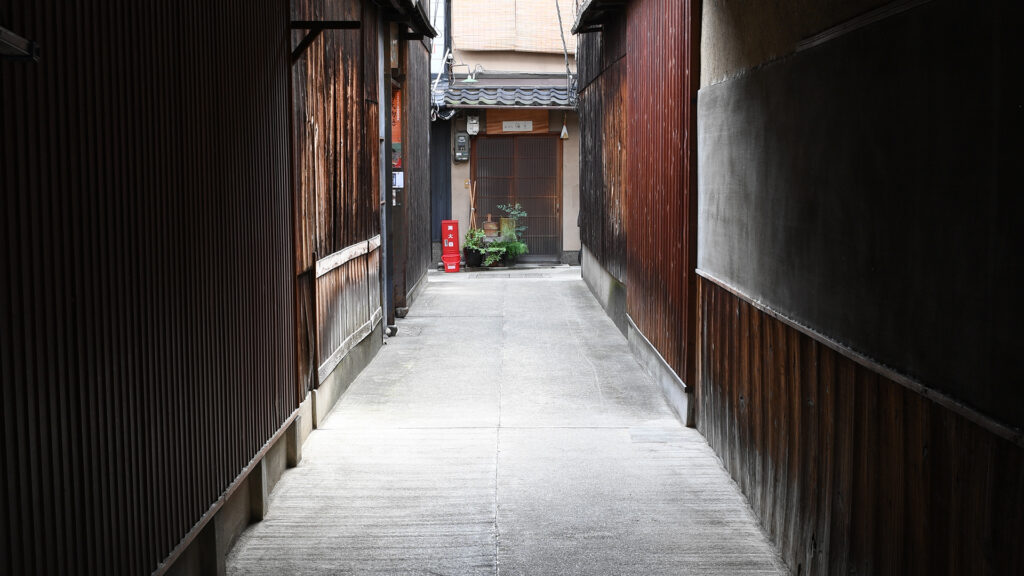
Chapter Four: The Evening Light at Tatsumi Bridge and the Glow of a Ring
As evening approaches, the traveler leaves the workshop and strolls through Gion’s narrow lanes. Along the Shirakawa River, the stone path stretches, willows bend, and the setting sun reflects in glittering patterns on the water beneath Tatsumi Bridge.
You recall the ring Takata showed earlier. Its soft curves somehow resemble the flow of this river. The way the colors shift is much like the shadows and light on the stone pavements. The patterns of mokume-gane are more than mere design—they are “landscapes” reflecting the air, time, and memories of this town.
You imagine someone exchanging rings here by Tatsumi Bridge. Cherry petals drifting down, the murmuring Shirakawa flowing, the town lights beginning to softly glow. In such a moment, the mokume-gane ring quietly shines, whispering the layers of Kyoto’s time.
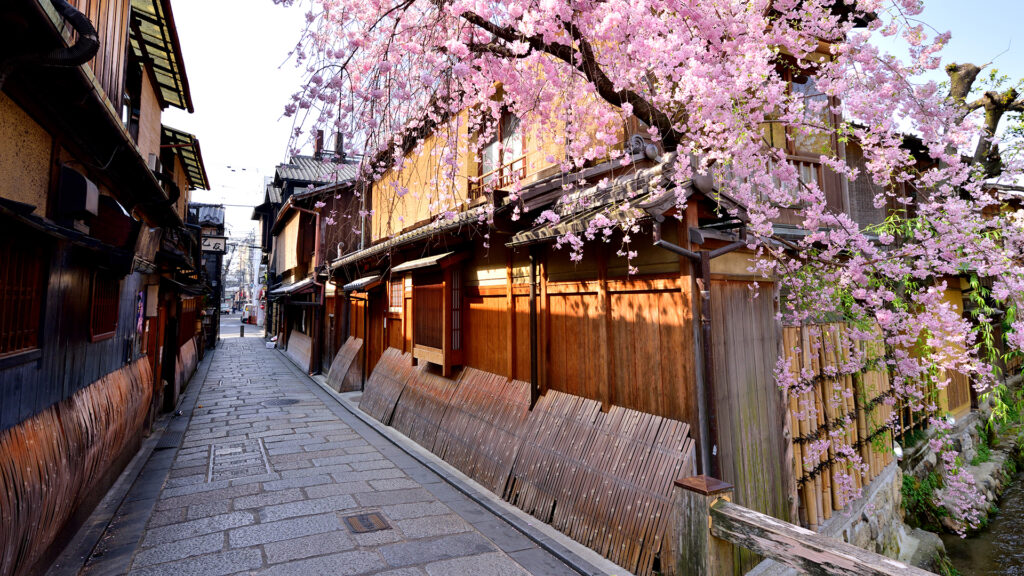
Final Chapter: What the Pattern Holds
A journey in Kyoto is made up of layered memories. Each one may be fleeting, small, and delicate. Yet together, they overlap, soak in, and become a “pattern” unique to you.
Kunio Takata’s mokume-gane is like such a journey. Different metals come together, forming patterns by chance, just as travelers meet landscapes, encounter people, and leave something etched in their hearts.
When you hold the ring, the pattern speaks: “This is the scene from that moment.”
“That sunset on the stone path.”
“That swaying willow.”
“That sound of the hammer.”
All of it is contained in this small circle.
The reason you want to return to Kyoto is not only its beauty—it is because you can layer your own pattern upon it. Everyone has their own Kyoto. And Kunio Takata’s mokume-gane is a quiet poem, meant to engrave yours forever upon your finger.
Author: Naoko Yamamoto
